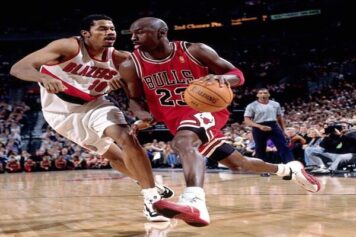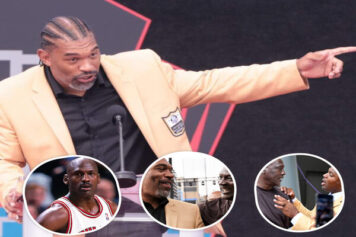With Dean Smiths recent passing, Ive been spending the last few days thinking about one of my favorite college basketball programs, The University of North Carolina Tar Heels.
The legacy of Coach Smith’s tenure at this esteemed institution immediately conjures up words like prestige, championships, class and dominance, along with Hall of Fame names like James Worthy, Larry Brown, Billy Cunningham, Bob McAdoo and Michael Jordan. Theyve won 29 ACC regular season titles, 17 ACC tourney titles, competed in 18 Final Fours, appeared in nine title games and captured five National Championships.
Im always interested in the foundation and architecture behind a programs ascension to such rarefied heights. How did the program elevate to that penthouse level? How did the hoops program create the intense fanaticism and enthusiasm that spread, like the rhetoric of fear and ignorance at a Rudy Guiliani press conference, throughout the state and the entire country?
The University of North Carolina started playing basketball in 1910. From 1921 through the early 1950s, they dominated the Southern Conference. In 1953, they became a founding member of the Atlantic Coast Conference.
During and prior to the 1950s, though, the quality of the game in the south was considered inferior to the brand being played up north. North Carolina may have been dominating in the Southern Conference, but other programs had no true respect for their accomplishments.
In 1953, that began to change when Carolina hired the coach of New York Citys St. Johns University, Frank McGuire.
Highly respected, McGuire led St. Johns to both the College Baseball World Series in 1949 and the hoops Final Four in 1952.
He didnt make the move to UNC like many coaches today because of endorsement revenue, an astronomical signing bonus and salary. His son Frankie suffered from cerebral palsy and caring for him in the Big Apple was becoming increasingly difficult.
Once settled in Chapel Hill, McGuire, a New Yorker to the core of his essence, did what hed always done. He hit the pavement to stock his roster. His first game, only 1,200 fans showed up. His office was a shabby old bathroom that had been reconstituted.
But McGuire scoured the playgrounds and New York City hoops culture to transplant the city game down to his new home, establishing a powerful pipeline that would deliver the players that would propel the Tar Heels on an incredible upward trajectory.
The Bronxs Lenny Rosenbluth, Brooklyns Joe Quigg and Pete Brennan, Harlems Bob Cunningham and Jerseys Tommy Kearns, who played his high school ball for the great Lou Carnesecca at St. Anns in Manhattan, were among the first city transplants.
Rosenbluth was a mysterious, 6-foot-5 scorer whose prep career consisted of a mere seven games. He did his damage on the citys asphalt playgrounds and made his way to UNC on the recommendation of a street scout.
In 1957, the Tar Heels defeated Wilt Chamberlains Kansas Jayhawks in triple overtime to win the NCAA title. At the time, it was considered one of the greatest upsets in the history of sports as no one thought Carolina’s undersized crew could handle Wilt the Stilt.
That championship game was televised throughout the state and was a pivotal impetus in the local interest that the sport seemed to instantly generate.
In 1961, assistant coach Dean Smith took over the programs reigns in the wake of a recruiting scandal that forced McGuire to resign.
Smith maintained the connection to the playgrounds of New Yorks five boroughs and high school hoops infrastructure, recruiting Harlems phenomenal Charlie Scott, who became the schools first African-American scholarship basketball player ever. Another of his early recruits was Brooklyns Billy The Kangaroo Kid Cunningham out of Erasmus Hall High School.
Throughout the years, Carolina kept that city flavor on their roster. From Sam Perkins to Ed Cota, from Larry Brown to Kenny The Jet Smith, from Jimmy Black, Derrick Phelps, Brian Reese and beyond; if there was a significant player in the New York area, Carolina was always in the recruiting mix.
(Ever Wonder Why They Called Kenny Smith “The Jet”?)
Without Frank McGuire, none of what you see today would have been put in motion. It was the playgrounds of New York City that produced McGuire, who perpetually went back to the well, again and again, to establish the UNC tradition. They used the city game to forge the Tar Heel legacy, simultaneously taking college hoops from a regional to national phenomenon.
It is a tradition that the great Dean Smith enhanced, the residual effects which live on today through Roy Williams, who is now recruiting similarly quick playmakers at the point guard position from the rich soil of the Metro Washington, D.C. and Maryland areas, like Ty Lawson, Nate Britt and Kendall Marshall.
The University of North Carolinas tradition of excellence is one that that few can compete with, and its foundation was built purely with the concepts, mentality and aesthetics of the northern city game.
And, of course, we all know that Michael Jordan was born in Brooklyn!



